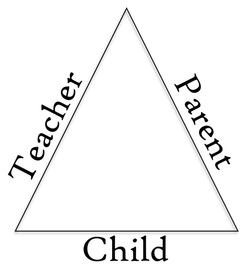 The idea of the Suzuki Triangle is of an equilateral one, with the parent, the teacher, and the student in each of the sides. This illustrates that all roles are equally important and mutually supportive. The Triangle can't sustain itself without cooperation and clear communication between its components. Why cooperation? The adults involved in this process have a common goal: the education of the student. The teacher and the parent want what is best for the student in front of them, and should work as a team to achieve such objective. And just like in a sports team, sometimes the opinion of one player is different from the opinion of the coach, which might be different also from the opinion of the fans... What to do, then? Communicate! Communication between the 3 sides of the Triangle should be based on honesty and respect. Clear and honest communication avoids misunderstanding and keeps all parties on the same page. Parents should not be afraid to ask questions, and teachers should not be afraid to listen and respond to them. Within the model of the Triangle, each side has responsibilities. Understanding what is expected from the parent, the child, and the teacher will help to keep the communication line open and to develop the child’s skills to the best of their abilities! Here is a short list of some of the responsibilities:
Besides the ideas above, I also suggest watching this short video: The Expanded Suzuki Triangle: Nurturing the Student within the Community. Comments are closed.
|
 RSS Feed
RSS Feed